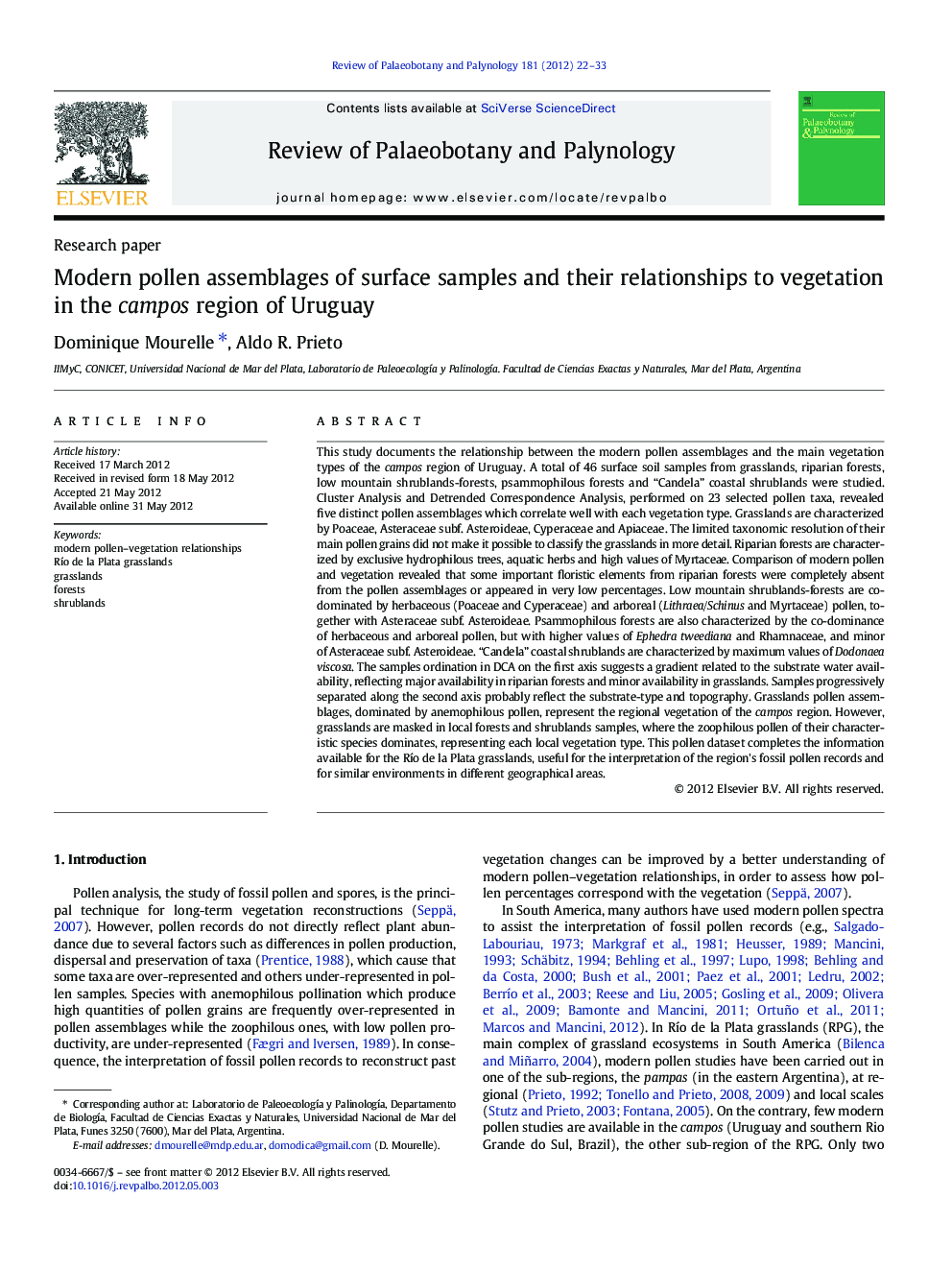| کد مقاله | کد نشریه | سال انتشار | مقاله انگلیسی | نسخه تمام متن |
|---|---|---|---|---|
| 4750493 | 1642517 | 2012 | 12 صفحه PDF | دانلود رایگان |

This study documents the relationship between the modern pollen assemblages and the main vegetation types of the campos region of Uruguay. A total of 46 surface soil samples from grasslands, riparian forests, low mountain shrublands-forests, psammophilous forests and “Candela” coastal shrublands were studied. Cluster Analysis and Detrended Correspondence Analysis, performed on 23 selected pollen taxa, revealed five distinct pollen assemblages which correlate well with each vegetation type. Grasslands are characterized by Poaceae, Asteraceae subf. Asteroideae, Cyperaceae and Apiaceae. The limited taxonomic resolution of their main pollen grains did not make it possible to classify the grasslands in more detail. Riparian forests are characterized by exclusive hydrophilous trees, aquatic herbs and high values of Myrtaceae. Comparison of modern pollen and vegetation revealed that some important floristic elements from riparian forests were completely absent from the pollen assemblages or appeared in very low percentages. Low mountain shrublands-forests are co-dominated by herbaceous (Poaceae and Cyperaceae) and arboreal (Lithraea/Schinus and Myrtaceae) pollen, together with Asteraceae subf. Asteroideae. Psammophilous forests are also characterized by the co-dominance of herbaceous and arboreal pollen, but with higher values of Ephedra tweediana and Rhamnaceae, and minor of Asteraceae subf. Asteroideae. “Candela” coastal shrublands are characterized by maximum values of Dodonaea viscosa. The samples ordination in DCA on the first axis suggests a gradient related to the substrate water availability, reflecting major availability in riparian forests and minor availability in grasslands. Samples progressively separated along the second axis probably reflect the substrate-type and topography. Grasslands pollen assemblages, dominated by anemophilous pollen, represent the regional vegetation of the campos region. However, grasslands are masked in local forests and shrublands samples, where the zoophilous pollen of their characteristic species dominates, representing each local vegetation type. This pollen dataset completes the information available for the Río de la Plata grasslands, useful for the interpretation of the region's fossil pollen records and for similar environments in different geographical areas.
► We document the modern pollen–vegetation relationship in the campos region of Uruguay.
► Five vegetation types are distinguished from pollen assemblages by statistical analyses.
► The pollen assemblages can be distinguished by their spectra and indicator species.
► Modern pollen reflect the vegetation heterogeneity at landscape scale.
► This study provides valuable data for the interpretation of Holocene pollen sequences.
Journal: Review of Palaeobotany and Palynology - Volume 181, 1 August 2012, Pages 22–33